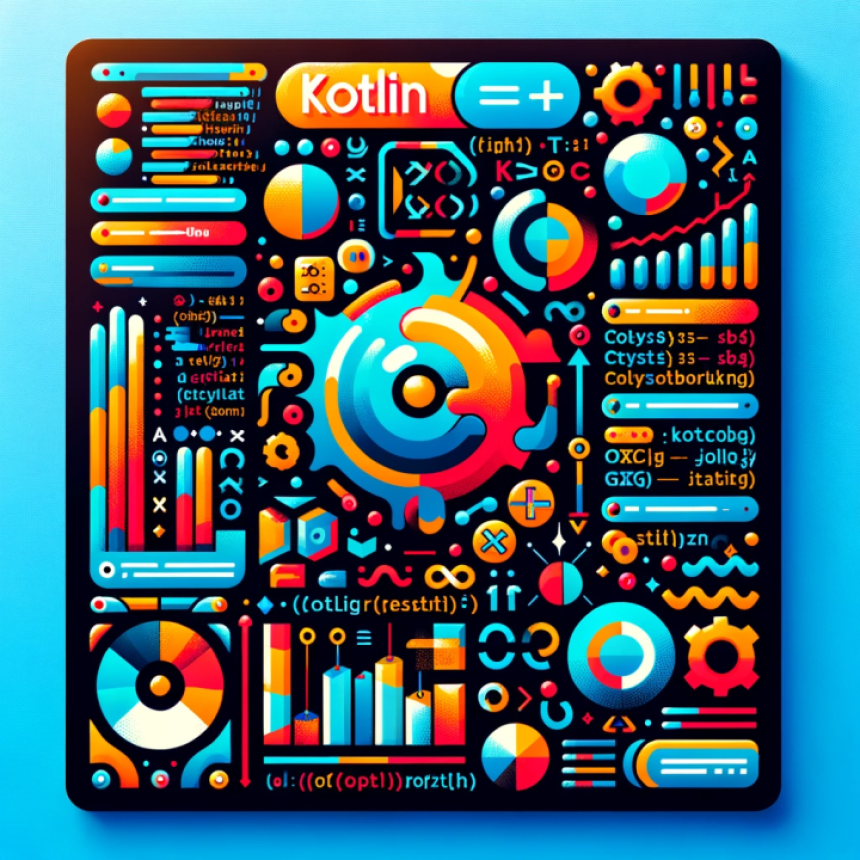
Test Driven Development
An overview of TDD, its philosophy and core principles. How it reverses the traditional development process by writing tests before code.
[1] Introduction to TDD
Test Driven Development (TDD) is a software development approach that has significantly influenced the way developers write code, ensuring higher quality and more maintainable software systems. At its core, TDD is both a philosophy and a methodology that emphasizes the importance of writing automated tests before developing the actual functionality or code. This approach fundamentally reverses the traditional software development process, where typically code is written first and tested later.
[A] The Philosophy Behind TDD
The philosophy of TDD is grounded in the idea of minimizing bugs, improving code quality, and fostering a deeper understanding of the code's purpose from the outset. It encourages developers to think through their design decisions and requirements before writing the code, leading to clearer, more concise, and purpose-driven code. This philosophy extends beyond mere testing to influence overall software design and development strategies, promoting a shift towards more iterative, responsive, and adaptive coding practices.
[B] Core Principles of TDD
TDD is built around a few core principles that guide developers through the development process:
- Write a Failing Test: Before writing functional code, a developer writes an automated test that defines a desired improvement or new function. Initially, this test will fail because the feature has not yet been implemented.
- Make the Test Pass: The next step is to write the minimum amount of code necessary to make the test pass. This encourages simplicity and focusing on the requirements.
- Refactor the Code: Once the test passes, the existing code is refactored to meet standards of cleanliness, efficiency, and design. This might involve removing duplication, improving clarity, or making other improvements that do not alter the functionality.
[C] The Cycle of TDD
The TDD process is iterative, consisting of repeated cycles of these three steps (Red-Green-Refactor). This cycle encourages continuous improvement of the code and tests, promoting a high level of code coverage and ensuring that the software is built with testing in mind from the ground up.
[D] Reversing the Traditional Development Process
Traditionally, testing is a phase that comes after the development process, often resulting in the identification of bugs and design flaws late in the cycle, which can be costly and time-consuming to fix. TDD flips this process, bringing testing to the forefront. By writing tests before code, developers can ensure that each new feature is immediately tested, reducing bugs and improving design quality from the very beginning. This approach also ensures that the codebase is always in a state where it has passed all tests, increasing confidence in the software's reliability and behavior.
Conclusion
In essence, TDD is more than just a testing methodology; it's a holistic approach to software development that emphasizes quality, documentation, and simplicity. By adopting TDD, developers can create more reliable, maintainable, and bug-free code. Furthermore, it fosters a mindset of continuous improvement and adaptation, which is crucial in today's fast-paced and ever-changing technology landscape.
As we delve further into TDD with Kotlin, we'll explore how this language and its ecosystem support the TDD methodology, enabling developers to write robust, testable code that stands the test of time.
----------
[2] Why TDD Matters in Software Development?
TDD has emerged as a crucial methodology in modern software development for several compelling reasons. Its impact goes beyond mere testing, influencing the overall quality, maintainability, and lifecycle of software products.
[A] Enhanced Code Quality
One of the most immediate benefits of TDD is the significant improvement in code quality. By writing tests before the actual code, developers are forced to think through the functionality and edge cases upfront, leading to more thoughtful, robust, and error-resistant implementations. This foresight helps in identifying potential issues early in the development cycle, where they are easier and less costly to address.
[B] Improved Design and Architecture
TDD encourages developers to consider the design of their code from the outset. Since tests are written first, the code is designed to be testable, which often results in cleaner, more modular architecture. This modularity allows for easier maintenance, scalability, and adaptation of the software to changing requirements over time.
[C] Facilitation of Refactoring
Refactoring code to improve its structure, performance, or readability without changing its external behavior is an integral part of software development. TDD makes refactoring safer and more efficient, as the suite of tests ensures that the functionality remains intact after changes. This confidence allows developers to continuously improve the codebase, keeping the software healthy and adaptable.
[D] Documentation and Specification
Tests written in a TDD approach serve as living documentation for the system. They clearly describe what the code is supposed to do, which is invaluable for new team members, or when revisiting a codebase after some time. This aspect of TDD ensures that knowledge about the system's functionality is preserved and easily accessible.
[E] Reduction in Bug Rates
By emphasizing test coverage and early testing, TDD significantly reduces the bug rate in software products. This proactive approach to bug identification and resolution leads to more reliable software, enhances user trust, and reduces the time and resources spent on debugging and fixing issues post-release.
[F] Enhances Developer Productivity
While TDD might seem to slow down the development process initially due to the extra time spent writing tests, it actually enhances productivity in the long run. The reduction in bugs, clearer specifications, and cleaner codebase reduce the time developers spend on debugging and reworking problematic code. Moreover, the iterative nature of TDD, with its short feedback loops, keeps the development momentum going, ensuring steady progress.
[G] Better Team Collaboration
TDD can foster better collaboration within development teams. Since tests define the functionality and design specifications clearly, they ensure that all team members have a common understanding of the project's goals and progress. This clarity helps in coordinating efforts, especially in larger teams or those distributed across different locations.
Conclusion
In the landscape of software development, where the complexity and demands of projects continue to grow, TDD offers a structured, disciplined approach that addresses many of the inherent challenges. It elevates the quality of the software, streamlines the development process, and aligns closely with agile and iterative development methodologies. By adopting TDD, teams can not only improve their immediate output but also ensure the long-term health and success of their software projects.
------------
[3] Understanding the TDD Cycle
The TDD cycle consists of three primary stages that developers repeat for each new feature or unit of functionality they want to implement. These stages are designed to ensure that software development is guided by tests, leading to higher quality code that meets requirements precisely and is easier to maintain and adapt over time.1. Red: Write a Failing Test
- Purpose: The cycle begins with the "Red" phase, where the developer writes a new test that defines the expected behavior of a feature or a small piece of functionality that doesn't yet exist. This test will naturally fail when first run because the feature it tests has not been implemented. The failure is intentional and serves as a baseline to ensure that subsequent code changes make a tangible difference towards implementing the desired functionality.
- Implementation: Writing a failing test requires understanding the requirements and specifications of the feature. The test should be concise, focusing on a single aspect of the functionality. This phase enforces a clear definition of what success looks like for the feature being developed.
2. Green: Make the Test Pass
- Purpose: The "Green" phase involves writing the minimum amount of code necessary to make the failing test pass. This step is not about crafting a perfect solution on the first try but rather about quickly achieving a functional state that satisfies the test's criteria.
- Implementation: The focus here is on simplicity and effectiveness. The developer writes just enough code to fulfill the test's requirements, even if the solution is not the most elegant or efficient. The goal is to pass the test and ensure that the feature works as intended.
3. Refactor: Improve the Code
- Purpose: With the test passing, the cycle moves to the "Refactor" phase. Now, the developer refines the code, improving its structure, readability, and performance without changing its external behavior. This step is crucial for maintaining code quality and manageability over time.
- Implementation: Refactoring can involve a range of activities, from renaming variables for clarity, reducing duplication, extracting methods for better modularity, or applying design patterns. The tests written in the first phase serve as a safety net, ensuring that these improvements do not alter the functionality.
The Iterative Nature of the TDD Cycle
The TDD cycle is inherently iterative. After completing one cycle, the developer starts the next by writing a new test for the next piece of functionality or for another aspect of the application. This iterative process encourages gradual development, where features are built up piece by piece, with each step verified by tests. It fosters a disciplined approach to software development, where progress is continuously validated, and quality is built in from the start.
Conclusion
Understanding and effectively implementing the TDD cycle can transform the way software is developed. It shifts the focus from merely writing code to satisfy immediate requirements to a more holistic view where code quality, maintainability, and reliability are paramount. The TDD cycle encourages developers to think critically about their code, leading to more robust and adaptable software solutions. By embracing the Red-Green-Refactor cycle, teams can build software that not only meets but exceeds expectations, ensuring that development efforts are both efficient and effective.
------------
[4] Setting Up Your Kotlin Environment for TDD
1. Add Dependency Management
For managing dependencies, Kotlin projects often use Gradle or Maven. These tools make it easy to include external libraries for testing. Here’s how you can set up your build.gradle.kts (Kotlin DSL) file for a Gradle project to include JUnit, a widely used testing framework:
plugins {
kotlin("jvm") version "1.6.10"
application
}
repositories {
mavenCentral()
}
dependencies {
implementation(kotlin("stdlib"))
testImplementation("org.junit.jupiter:junit-jupiter:5.7.0")
}
tasks.test {
useJUnitPlatform()
}
This configuration sets up JUnit 5 for your project. The testImplementation line adds JUnit as a test dependency, and the useJUnitPlatform() line configures Gradle to use JUnit Platform for running tests.
2. Writing Your First Test
Before writing production code, start by writing a test. Kotlin tests are usually placed in the src/test/kotlin directory of your project. Here’s a simple example of a test class using JUnit 5:
import org.junit.jupiter.api.Assertions.assertEquals
import org.junit.jupiter.api.Test
class CalculatorTest {
@Test
fun `adding 1 and 2 should equal 3`() {
val calculator = Calculator()
val result = calculator.add(1, 2)
assertEquals(3, result)
}
}
This test defines a CalculatorTest class with a single test method that asserts the add function of a Calculator class returns the correct sum of two numbers.
3. Implementing the Production Code
After writing your test, implement the production code to make the test pass. Create a Calculator class in the src/main/kotlin directory:
class Calculator {
fun add(a: Int, b: Int): Int = a + b
}
4. Running Your Test
Run the test using your IDE’s testing tools or via the command line with Gradle or Maven. If everything is set up correctly, your test should pass, indicating that your add function works as expected.
Conclusion
Setting up a Kotlin environment for TDD involves selecting an IDE, setting up a project with dependency management for test frameworks, and writing tests before your production code. By following these steps and leveraging Kotlin’s strong support for TDD, you can ensure that your development process is efficient, and your code is robust and testable. This setup not only facilitates TDD practices but also encourages better software design and development habits.
-----------
[5] Writing Your First Test in Kotlin
Writing your first test in Kotlin is an exciting step towards adopting Test Driven Development (TDD) practices in your software development process. Kotlin, with its concise syntax and interoperability with Java, makes writing tests a streamlined and efficient process. Let's walk through the creation of a simple test case using JUnit, one of the most popular testing frameworks in the Java and Kotlin ecosystems. This example will give you a practical introduction to testing in Kotlin.
Prerequisites
Ensure you have a Kotlin project set up with JUnit as a dependency. If you're using Gradle for dependency management, your build.gradle.kts file should include JUnit in the testImplementation configuration, as shown in the previous section.
Creating a Simple Test Case
For our example, let's test a simple Kotlin class that implements a function to check if a number is even. We'll start by defining the class we want to test, followed by writing a test for it.
Step 1: Define the Class to Test
Create a Kotlin file named NumberUtils.kt in your src/main/kotlin directory (or package) and define a class with a method to check if a number is even:
// src/main/kotlin/NumberUtils.kt
class NumberUtils {
fun isEven(number: Int): Boolean = number % 2 == 0
}
Step 2: Set Up the Test Class
Next, create a Kotlin file for your tests in the src/test/kotlin directory. You might name it NumberUtilsTest.kt to reflect that it contains tests for the NumberUtils class.
Step 3: Write the Test Method
In NumberUtilsTest.kt, import JUnit's annotations and assertion functions, then define a test class with a method that tests the isEven function. Use the @Test annotation to denote a test method. Here's how you might write a simple test to verify that isEven correctly identifies an even number:
// src/test/kotlin/NumberUtilsTest.kt
import org.junit.jupiter.api.Assertions.assertFalse
import org.junit.jupiter.api.Assertions.assertTrue
import org.junit.jupiter.api.Test
class NumberUtilsTest {
@Test
fun `isEven returns true for even numbers`() {
val numberUtils = NumberUtils()
assertTrue(numberUtils.isEven(2), "2 should be even")
}
@Test
fun `isEven returns false for odd numbers`() {
val numberUtils = NumberUtils()
assertFalse(numberUtils.isEven(3), "3 should be odd")
}
}
In these tests, we're using assertTrue and assertFalse from JUnit to assert that the isEven method returns the correct result for both even and odd numbers. The string argument at the end of each assertion call provides a message that will be displayed if the test fails, helping diagnose issues more quickly.
Step 4: Run Your Tests
With your test class defined, run the tests using your IDE's test runner or via the command line if you're using a build tool like Gradle or Maven. If everything is set up correctly, both tests should pass, indicating that your isEven function behaves as expected.
Conclusion
Writing tests in Kotlin using JUnit is straightforward thanks to Kotlin's expressive syntax and the comprehensive testing functionality provided by JUnit. By writing a test first (as we did in this example), you're taking the first step in adopting TDD practices. This approach not only helps ensure your code works as intended but also encourages you to think critically about your code's design and functionality from the outset. As you continue to develop your Kotlin application, keep writing tests for each new piece of functionality before implementing it, and you'll build a robust and reliable software system.
---------
[6] Implementing TDD with Kotlin: Step-by-Step
Implementing Test Driven Development (TDD) with Kotlin involves a disciplined approach of writing tests before writing the actual code. This step-by-step guide will take you through the TDD process using Kotlin, demonstrating how to apply TDD principles to develop a simple class. Our example will focus on creating a class that manages a list of tasks, showcasing how TDD influences the design and development of your code.
Step 1: Set Up Your Environment
Before starting, ensure your development environment is ready for Kotlin development and TDD. You should have:
- An IDE that supports Kotlin (e.g., IntelliJ IDEA).
- The Kotlin plugin installed and configured.
- A build tool configured for Kotlin (e.g., Gradle or Maven) with dependencies for a testing framework like JUnit.
Refer to the "Setting Up Your Kotlin Environment for TDD" section for details on setting up your project.
Step 2: Define the First Test
Identify the first feature you want to implement. In our case, let's start with the ability to add a task to our task manager.
Before writing any code for the task manager, write a test that describes the expected behavior. Create a test class named TaskManagerTest in your src/test/kotlin directory:
// src/test/kotlin/TaskManagerTest.kt
import org.junit.jupiter.api.Assertions.assertTrue
import org.junit.jupiter.api.Test
class TaskManagerTest {
@Test
fun `addTask adds a task to the task manager`() {
val taskManager = TaskManager()
taskManager.addTask("Write TDD article")
assertTrue(taskManager.containsTask("Write TDD article"))
}
}
This test checks that after adding a task, the task manager reports it as present.
Step 3: Run the Test (Red Phase)
Run the test. Since we haven't implemented TaskManager yet, the test will fail. This failure is expected and marks the Red phase of the TDD cycle.
Step 4: Write the Simplest Code to Pass the Test (Green Phase)
Now, implement the minimal amount of code in TaskManager to pass the test. Create a class named TaskManager in your src/main/kotlin directory:
// src/main/kotlin/TaskManager.kt
class TaskManager {
private val tasks = mutableListOf<String>()
fun addTask(task: String) {
tasks.add(task)
}
fun containsTask(task: String): Boolean = tasks.contains(task)
}
This implementation simply stores tasks in a list and provides methods to add a task and check if a task exists.
Step 5: Rerun the Test
Run your test again. This time, it should pass, indicating that your TaskManager class meets the requirement specified by your test. This success marks the Green phase of the TDD cycle.
Step 6: Refactor (Refactor Phase)
Examine your code for any possible refactoring to improve readability, efficiency, or structure without changing its behavior. For our simple example, there might not be much to refactor yet, but always consider this step as your project grows.
Step 7: Repeat the TDD Cycle
With the first test passing and the initial functionality implemented, identify the next feature or aspect of the system to develop. For example, you might write tests and then implement features for removing a task, checking if the task list is empty, or finding a task by name.
Continue this cycle of writing a test, making it pass, and then refactoring for each new piece of functionality. This iterative process ensures that your software is developed with a focus on testability and meets its specifications precisely.
Conclusion
Implementing TDD with Kotlin encourages thoughtful design and results in robust, well-tested software. By adhering to the Red-Green-Refactor cycle, you ensure that your development efforts are efficient and focused on delivering value. As you become more familiar with TDD, you'll find that it not only improves the quality of your code but also enhances your productivity by reducing time spent on debugging and manual testing. This step-by-step guide provides a foundation for integrating TDD into your Kotlin projects, fostering a development culture that prioritizes quality and reliability.
-------
[7] Common Challenges and Solutions in TDD
Test-Driven Development (TDD) is a powerful methodology that can significantly improve the quality and maintainability of your code. However, like any technique, it comes with its own set of challenges, especially when first adopting it or applying it to complex projects. Let’s discuss some common obstacles developers face when practicing TDD and explore strategies for overcoming these challenges.
Challenge 1: Understanding What to Test
Obstacle: Developers often struggle with determining the granularity of tests, i.e., what exactly should be tested and to what extent.
Solution: Focus on behavior rather than implementation. Write tests for the expected behavior of a unit of code from the user's or caller's perspective. This approach helps in identifying meaningful tests that contribute to the software's reliability.
Challenge 2: Dealing with External Dependencies
Obstacle: External dependencies, such as databases or web services, can make testing challenging due to their unpredictability and the difficulty of setting them up for tests.
Solution: Use mocking frameworks and dependency injection. Tools like Mockito for Kotlin and Java allow you to create mock objects that simulate the behavior of real dependencies. Dependency injection can be used to swap out real dependencies with mocks during testing, ensuring your tests are fast, reliable, and independent of external systems.
Challenge 3: Writing Effective Tests
Obstacle: Writing tests that are clear, concise, and valuable, without being brittle or overly specific, can be difficult.
Solution: Adhere to best practices for writing tests. Ensure each test is focused on a single aspect of behavior, use descriptive names for test methods, and keep tests independent of each other. Refrain from testing internal implementation details, as this can lead to fragile tests that break with any refactoring, even if the external behavior remains unchanged.
Challenge 4: Time Constraints
Obstacle: TDD can initially seem to slow down development, particularly under tight deadlines, leading to resistance from some developers and stakeholders.
Solution: Emphasize the long-term benefits of TDD, including reduced debugging time, lower maintenance costs, and improved code quality. As developers become more proficient with TDD, the initial slowdown diminishes. Additionally, integrating TDD into your development process can actually accelerate development in later stages of a project by significantly reducing the time spent on bug fixes and regression testing.
Challenge 5: Complex Scenarios and Integration Testing
Obstacle: Some features are difficult to test in isolation due to complex interactions or dependencies on other parts of the system.
Solution: In addition to unit testing with TDD, incorporate integration tests that verify the interactions between components. Use TDD to guide the design of these components so that they are more testable, even in complex scenarios. Techniques such as contract testing can also be useful in ensuring that interactions between services meet their defined expectations.
Challenge 6: Maintaining Test Suites
Obstacle: As the codebase grows, so does the test suite, which can become hard to maintain and slow to run.
Solution: Keep your tests clean and well-organized. Regularly review and refactor your test code just as you would your production code. Use test patterns and practices such as test fixtures and setup/teardown methods to minimize duplication. Consider splitting tests into different suites based on their scope and execution time, allowing for quicker feedback cycles during development.
Challenge 7: Cultural and Team Adoption
Obstacle: Adopting TDD requires a shift in mindset and culture within the development team, which can be challenging to achieve.
Solution: Foster a culture of learning and continuous improvement. Encourage pair programming and code reviews with a focus on testing. Provide training and resources on TDD and its benefits. Celebrate successes and improvements in code quality and team productivity that result from TDD practices.
Conclusion
While TDD presents challenges, especially for teams new to the methodology, the benefits in terms of code quality, reliability, and maintainability are significant. By understanding and addressing these common obstacles, teams can more effectively implement TDD, leading to more robust and error-resistant software. The key is to start small, stay committed, and continuously refine your approach as you gain more experience with TDD.
---------
[8] TDD Best Practices and Patterns in Kotlin
Adopting Test Driven Development (TDD) in Kotlin not only enhances code quality but also fosters a development process that is more agile, predictable, and focused on delivering functional, bug-free software. Kotlin's concise syntax and powerful features, combined with TDD, can lead to even more robust and maintainable codebases. Here, we'll explore some best practices and patterns specifically tailored to implementing TDD in Kotlin projects, including sample code to illustrate these concepts.
[A] Start with the Test
Before writing any implementation code, start by writing a test for the smallest possible functionality. This practice helps define the requirements clearly and keeps the focus on delivering value.
Example
Suppose you're developing a simple registration form. You might start with a test that verifies if the username is not empty:
import org.junit.jupiter.api.Test
import org.junit.jupiter.api.Assertions.assertFalse
class RegistrationFormTest {
@Test
fun `username should not be empty`() {
val form = RegistrationForm(username = "")
assertFalse(form.isValidUsername())
}
}
[B] Keep Tests Small and Focused
Each test should verify one aspect of the behavior. This makes tests easier to understand and maintain.
Example
Continuing with the registration form example, add another test for checking the minimum username length:
@Test
fun `username should be at least 3 characters long`() {
val form = RegistrationForm(username = "ab")
assertFalse(form.isValidUsername())
}
[C] Use Descriptive Test Names
Kotlin allows for using backticks in function names, enabling descriptive and human-readable test names.
Example
@Test
fun `submit button should be enabled when form is valid`() {
val form = RegistrationForm(username = "validUser")
assertTrue(form.isSubmitEnabled())
}
[D] Embrace Refactoring
After making your tests pass (Green phase), refactor the code. Kotlin’s safe refactoring support, coupled with the safety net of tests, makes this process efficient and reliable.
Example
Refactor by extracting validation logic into a separate validator class to keep the RegistrationForm class clean and focused on its responsibilities.
[E] Utilize Kotlin Features for Better Tests
Kotlin's features like extension functions, lambdas with receivers, and nullable types can be used to write more expressive and compact tests.
Example: Extension Functions for Assertions
Create an extension function to make your assertions more readable:
fun RegistrationForm.shouldBeValid() = assertTrue(this.isValid(), "Form should be valid")
@Test
fun `form with valid username should be valid`() {
val form = RegistrationForm(username = "validUser")
form.shouldBeValid()
}
[F] Mock Dependencies with MockK
For testing classes with external dependencies, use MockK, a Kotlin-specific mocking library that leverages Kotlin's features for a more fluent and expressive setup.
Example
import io.mockk.every
import io.mockk.mockk
@Test
fun `user is saved when registration is successful`() {
val userRepository = mockk<UserRepository>()
every { userRepository.save(any()) } returns Unit // Assuming `save` returns Unit
val registrationService = RegistrationService(userRepository)
registrationService.registerUser("validUser")
verify { userRepository.save(any()) }
}
[G] Use Property-Based Testing
For more thorough testing, consider using property-based testing frameworks like Kotest. This approach tests your functions with a wide range of inputs, enhancing the robustness of your tests.
Example
class UsernameTest : StringSpec({
"all valid usernames should pass validation" {
forAll<String> { username ->
RegistrationForm(username).isValidUsername() == username.length >= 3
}
}
})
Conclusion
Integrating TDD into your Kotlin development workflow can significantly improve the quality and maintainability of your applications. By adhering to these best practices and leveraging Kotlin's features, you can write more expressive, reliable, and concise tests. This not only aids in building robust applications but also enhances the overall development experience, making the process more enjoyable and efficient.
----------
That's it for now :).. Hope you enjoyed the article



![Design Patterns - [2] Structural](https://abuzaid.me/uploads/1675322845.jpeg)

